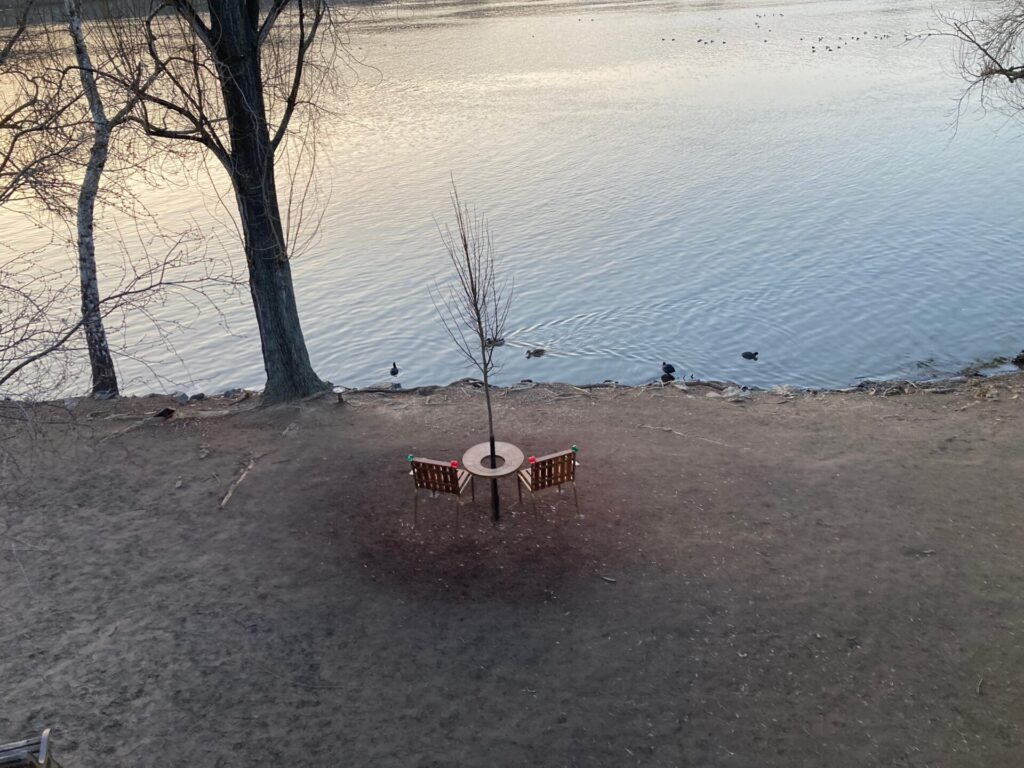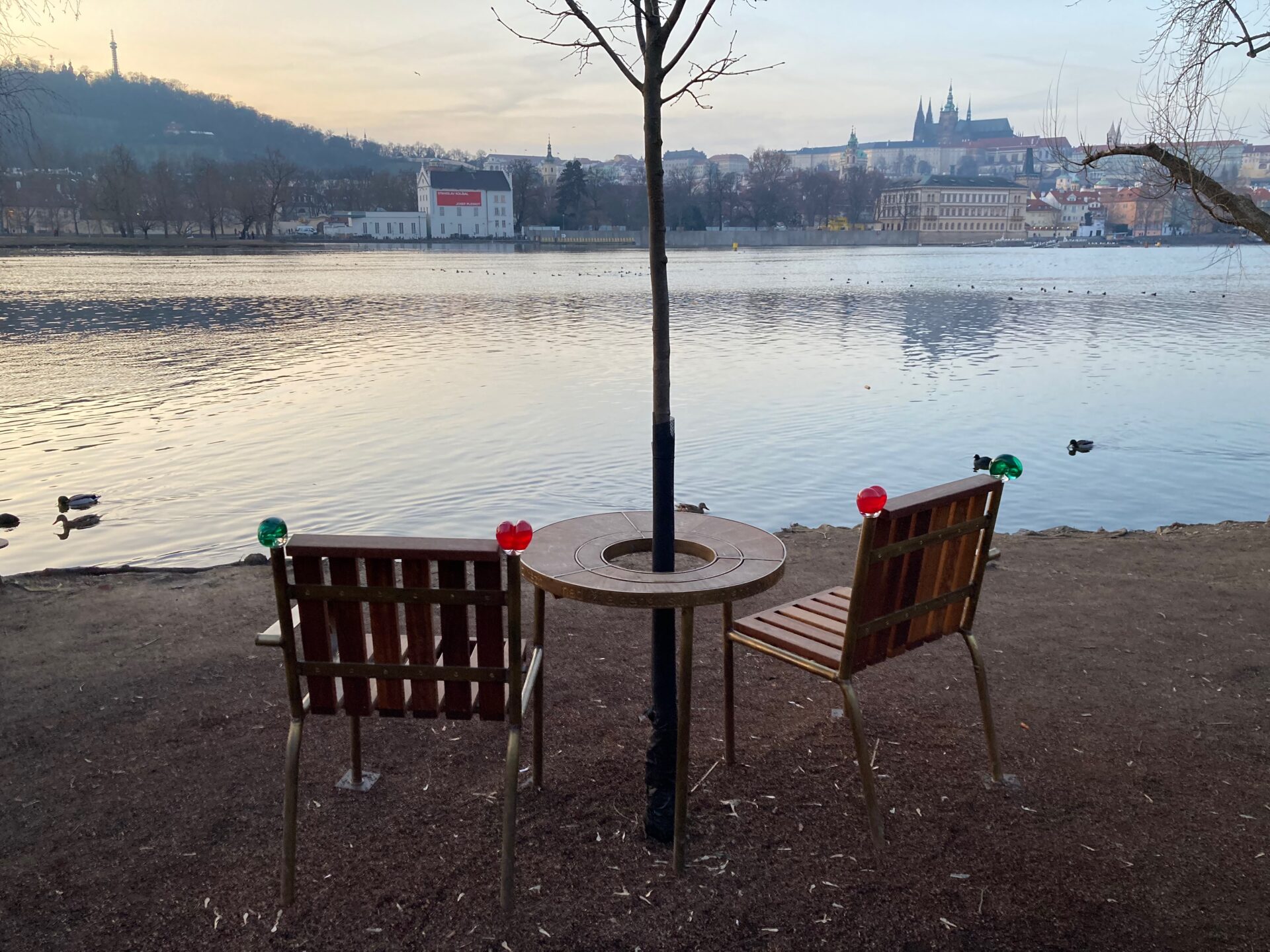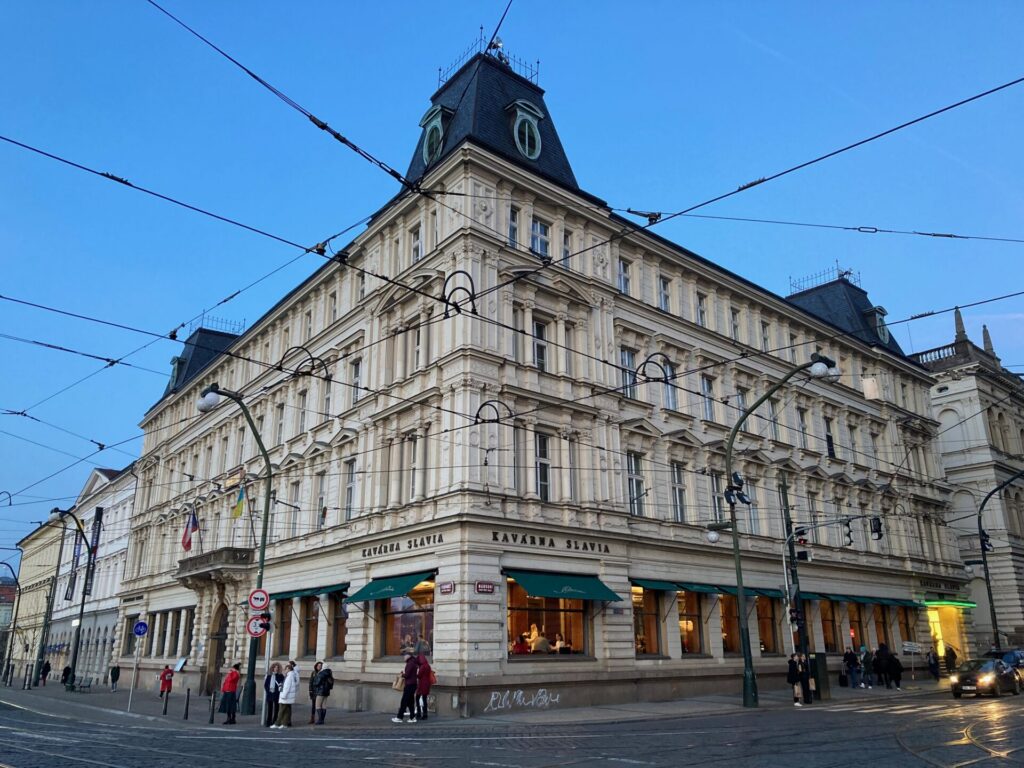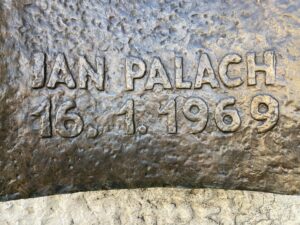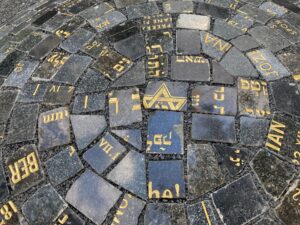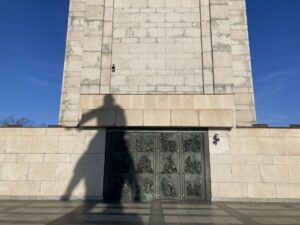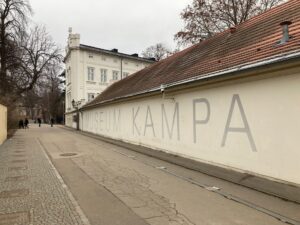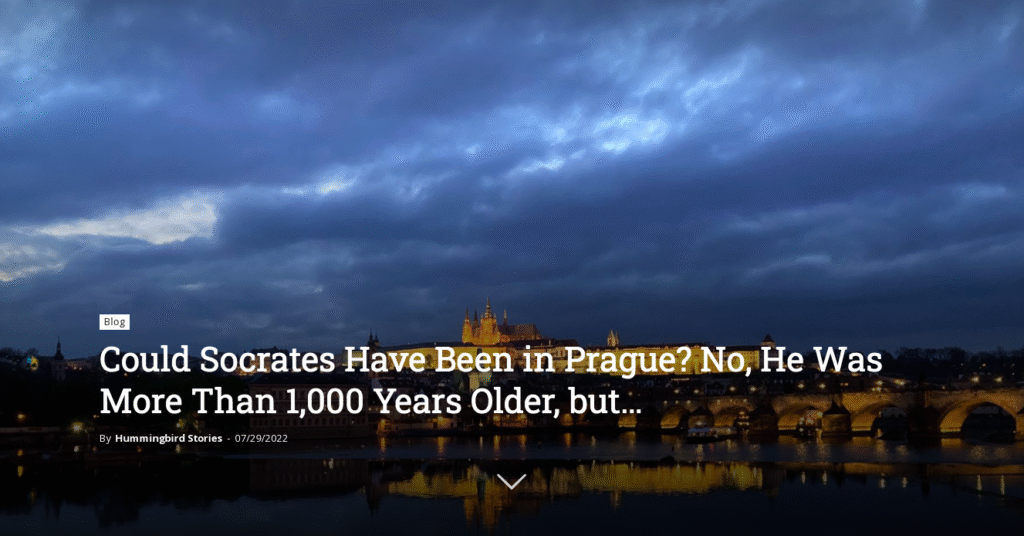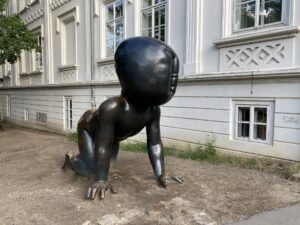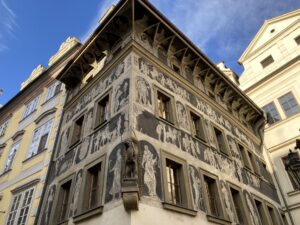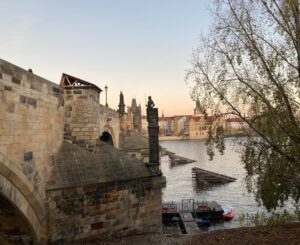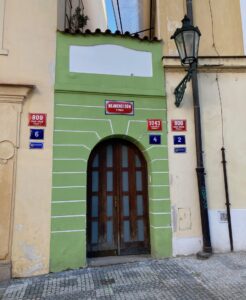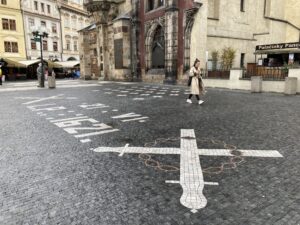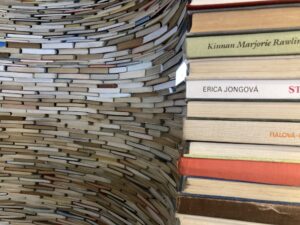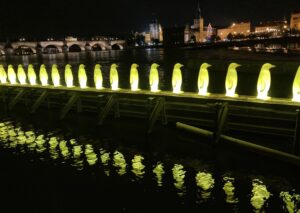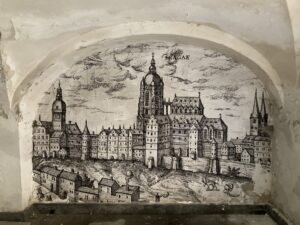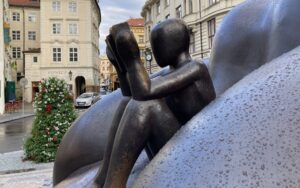Shortly after the death of President Václav Havel, Czech Ambassador to the USA Petr Gandalovič came up with the idea to build memorial sites to commemorate Václav Havel. For this project, he approached the designer Bořek Šípek, former chief architect of Prague Castle and Havel’s close friend. The purpose of this project was to create many places in the public space where people could meet, discuss and reflect.
Bořek Šípek came up with an elementary idea that symbolized democratic openness to dialogue: two metal garden chairs connected to a round table, in the center of which grows a linden tree, the national tree of the Czech Republic. Bořek Šípek called this concept: “Democracy Speaks.”
The first bench was installed in 2013 in Washington. To the present time, 49 benches have been built, of which 30 are in the Czech Republic and 19 in the following cities (from youngest to oldest): Paris, Hiroshima, Athens, Brussels, Lima, Bratislava, Milan, Geneva, Košice, Ljubljana, Lisbon, Tel Aviv, Portland, Oxford, The Hague, Venice, Barcelona, Dublin, and Washington.
There are 4 Václav Havel Benches in Prague. Actually 4+1 *
* Václav Havel and Ferdinand Vaněk’s Bench
The first bench in Prague is on Maltese Square. It was installed on May 1, 2014, on the 10th anniversary of the Czech Republic’s entry into the European Union.
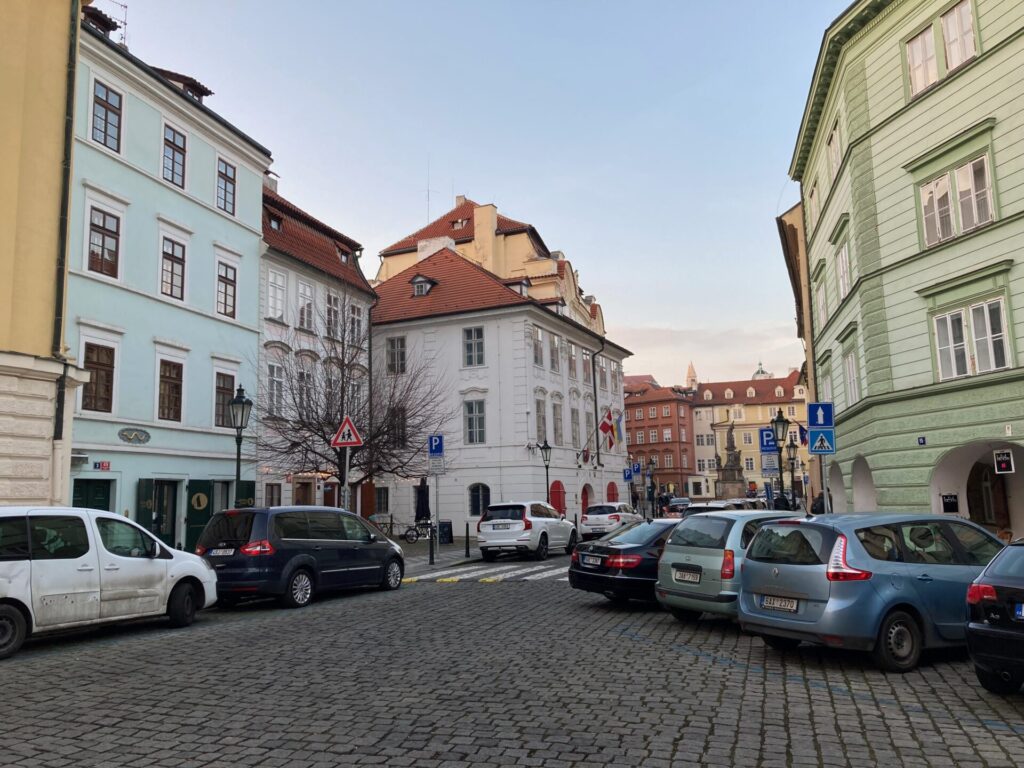
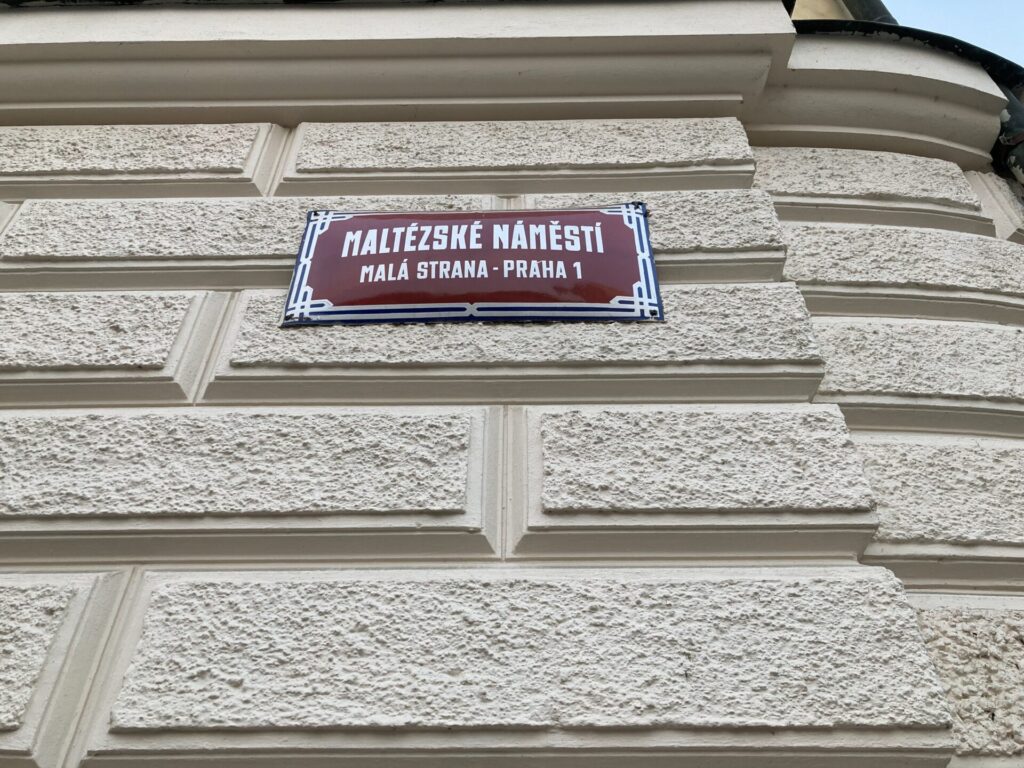
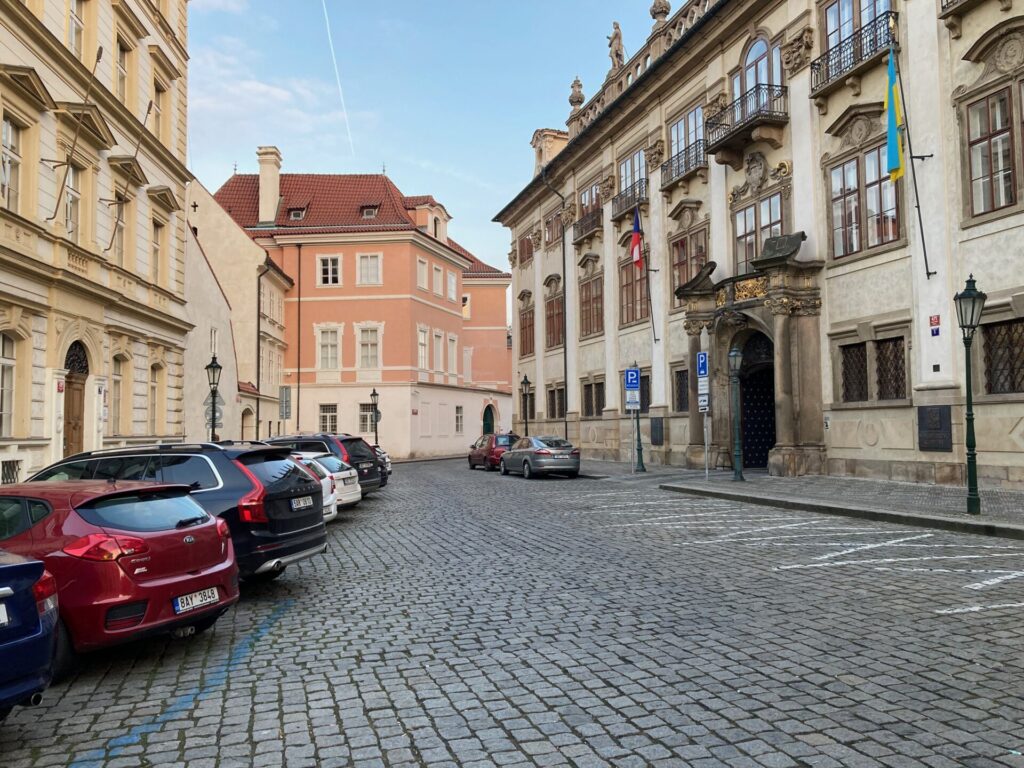
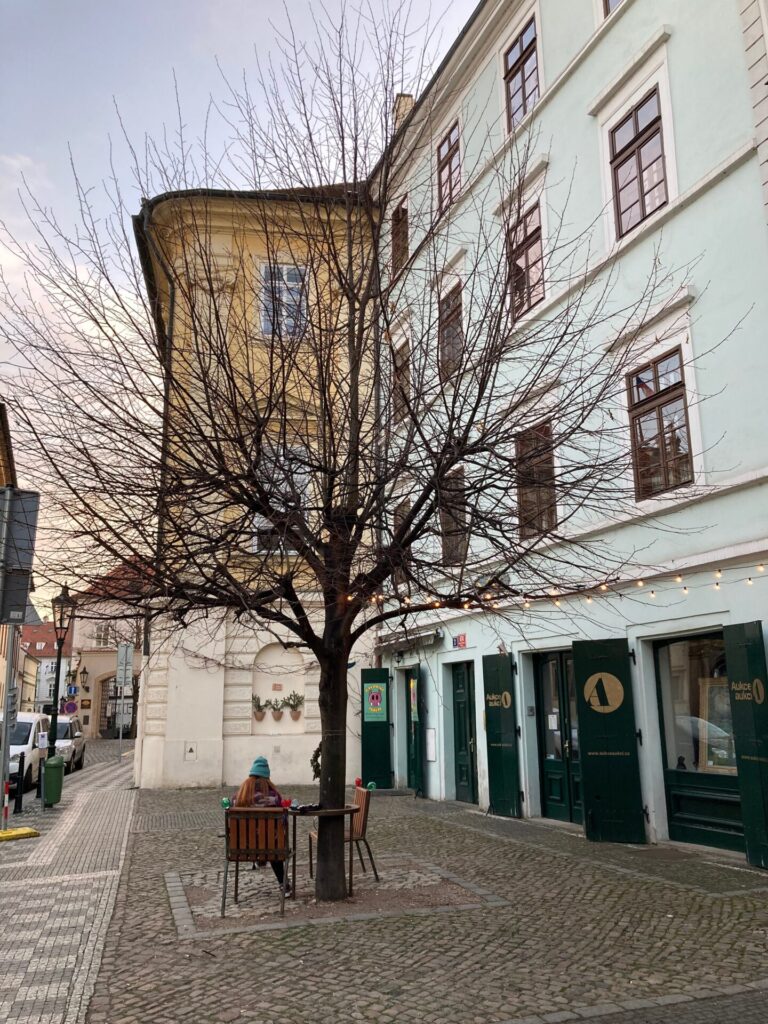
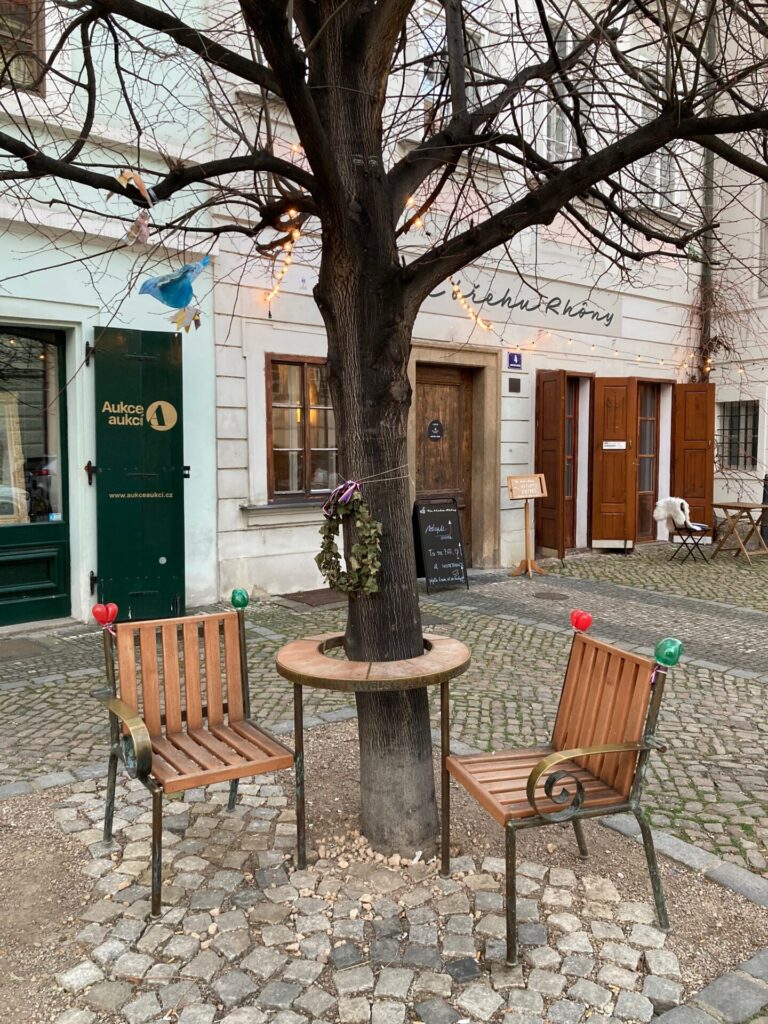
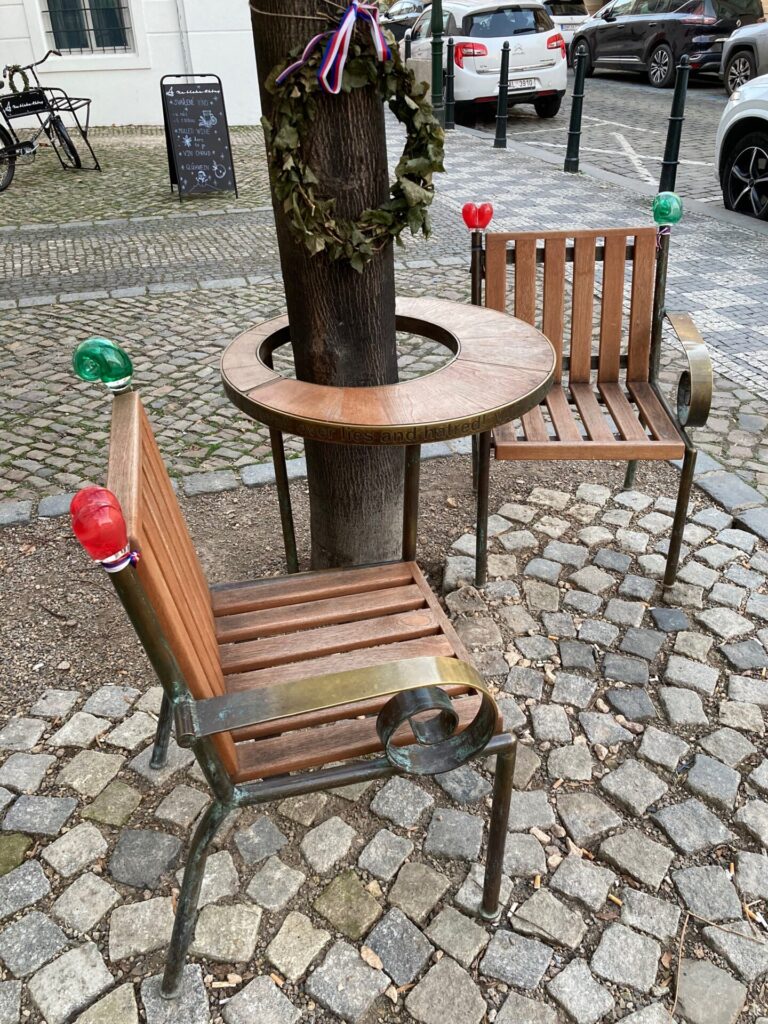
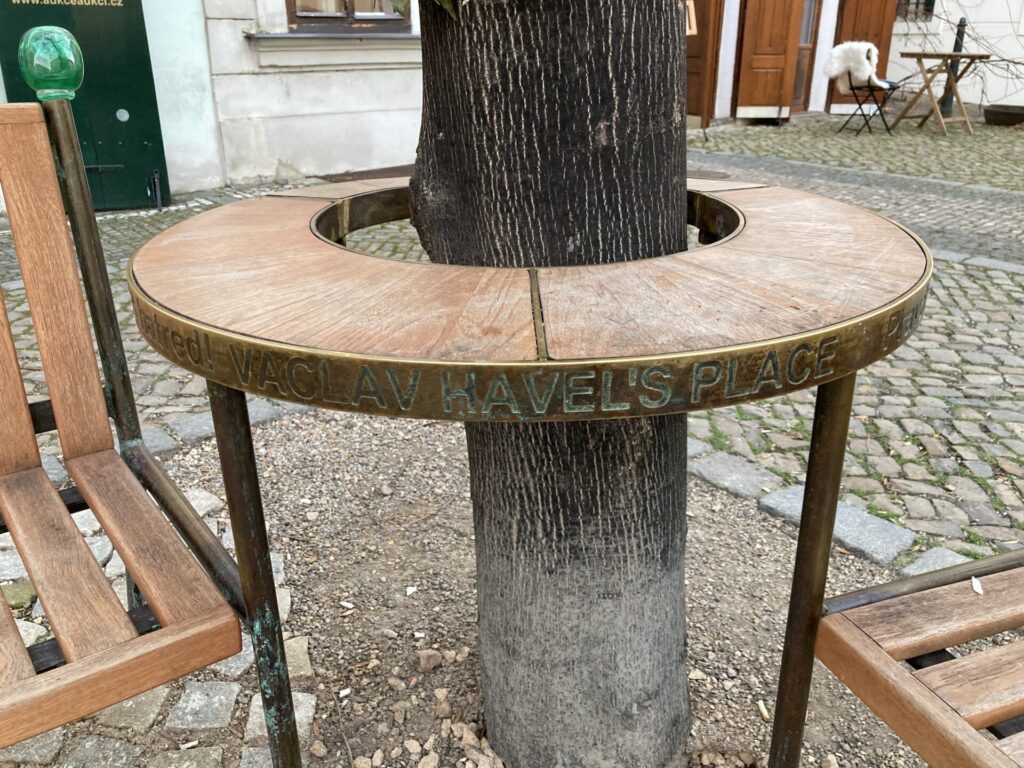
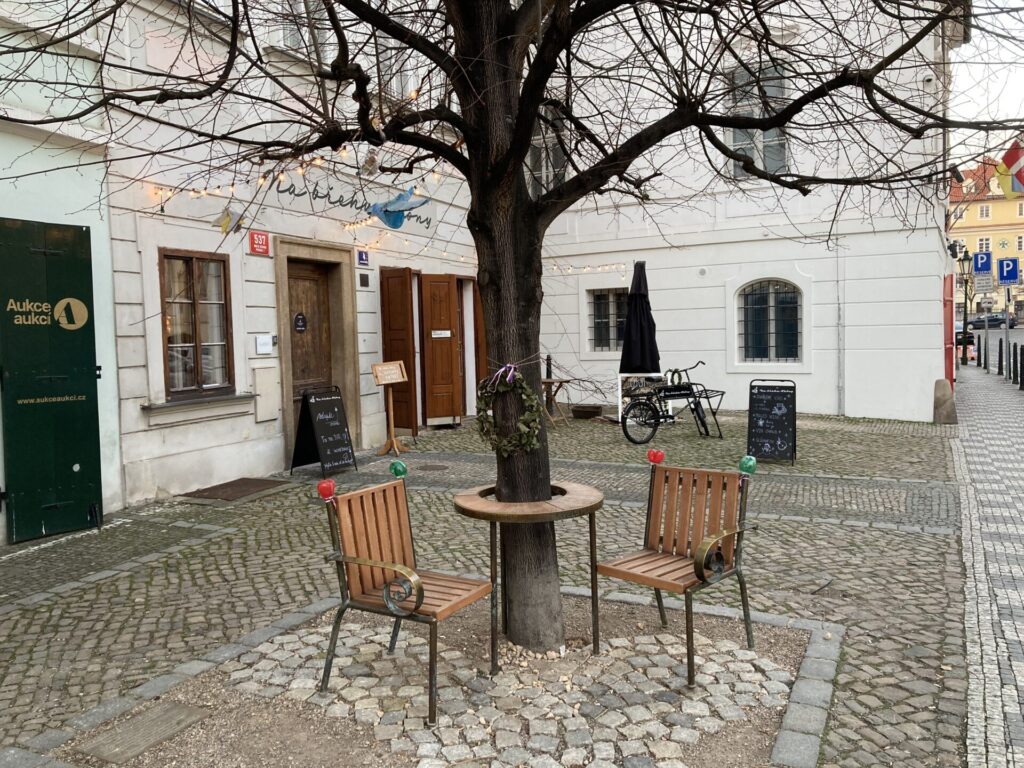
The second bench is on the outskirts of Prague, in Horní Počernice. It has been standing there since May 18, 2017, which was the day of the 40th anniversary of the premiere of Havel’s play The Beggar’s Opera, which took place in the hall of the pub in Počernice.
Prague’s third Havel bench has been standing since September 15, 2018, on the Czech University of Life Sciences premises in Suchdol.
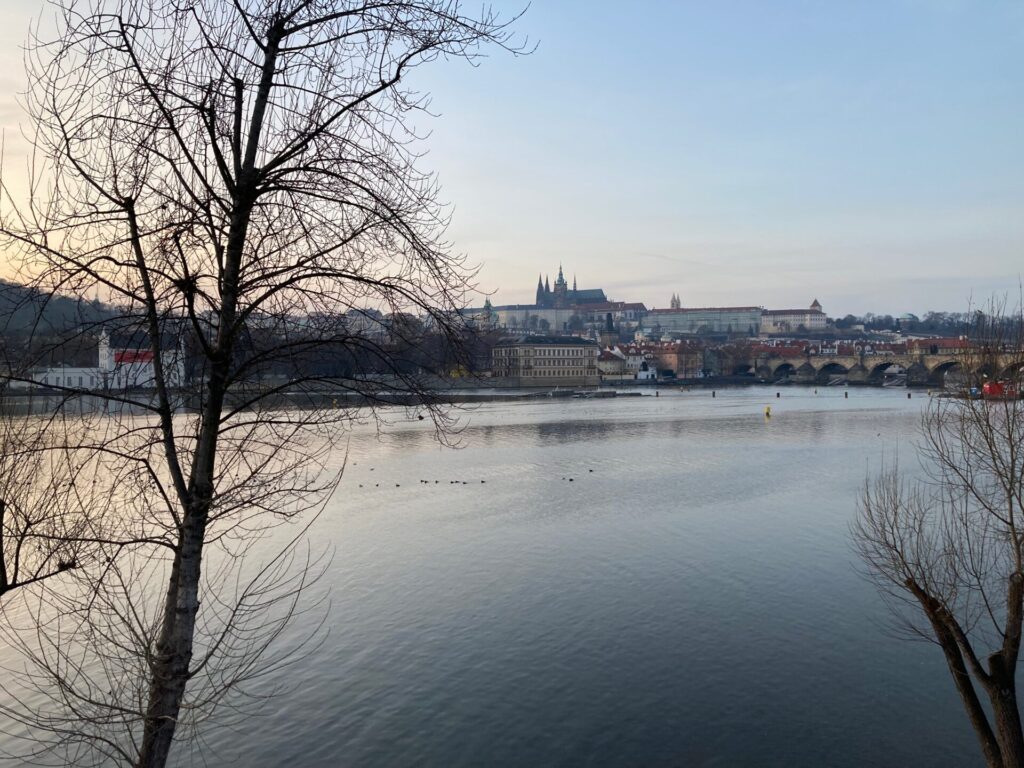
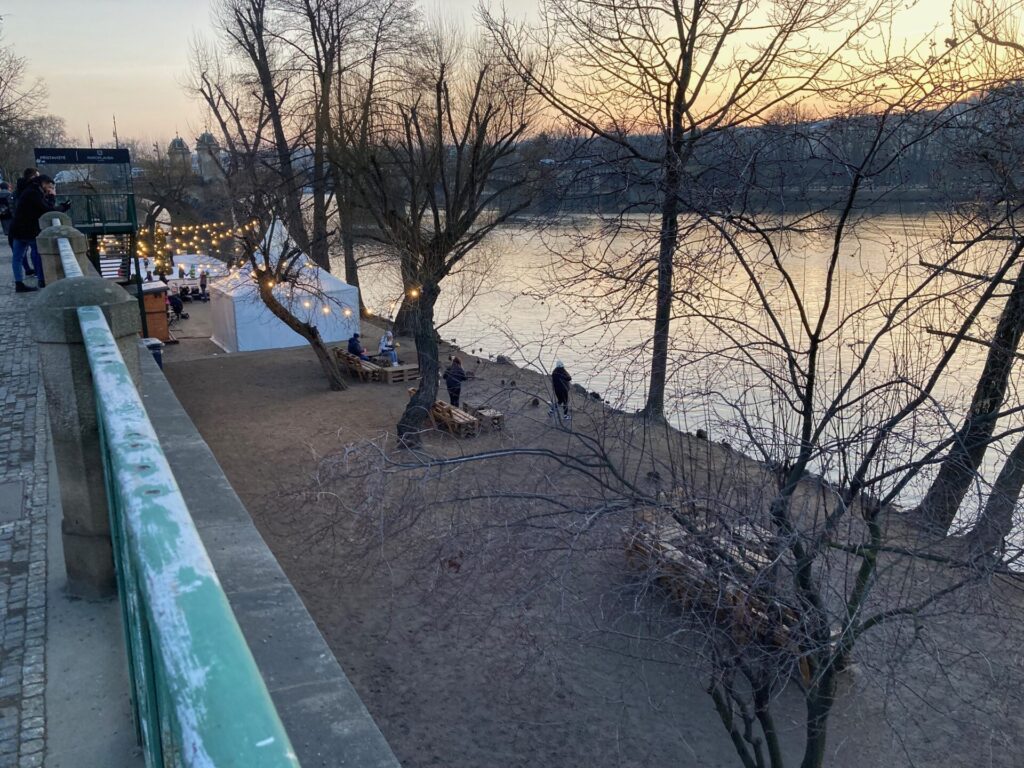
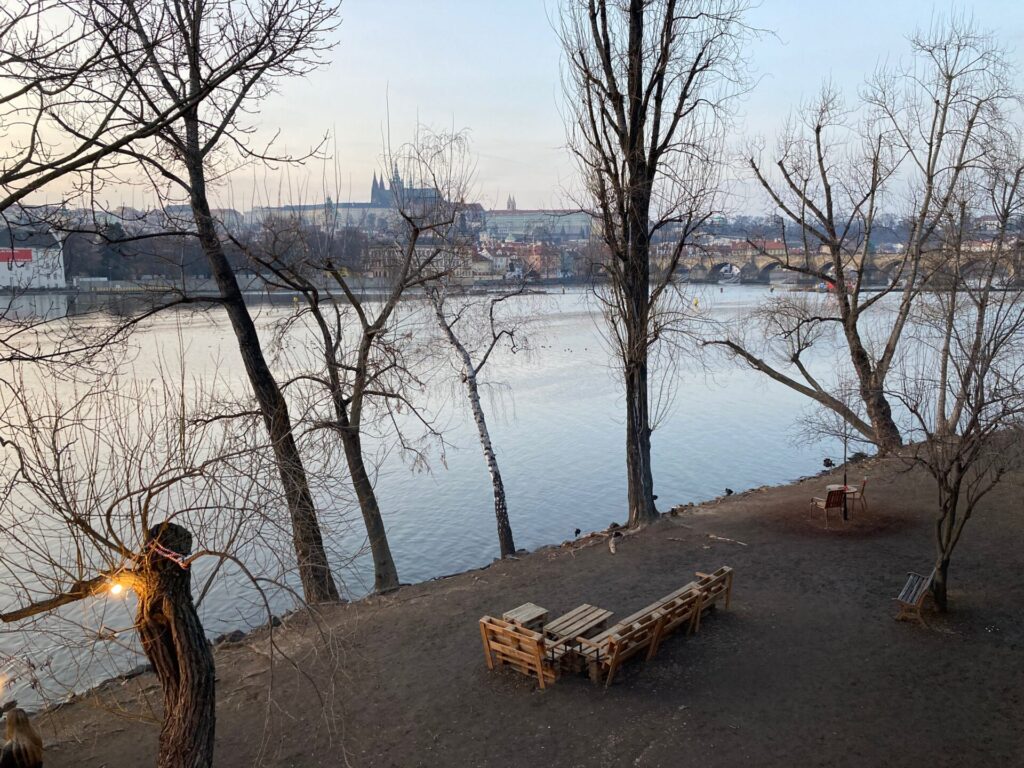
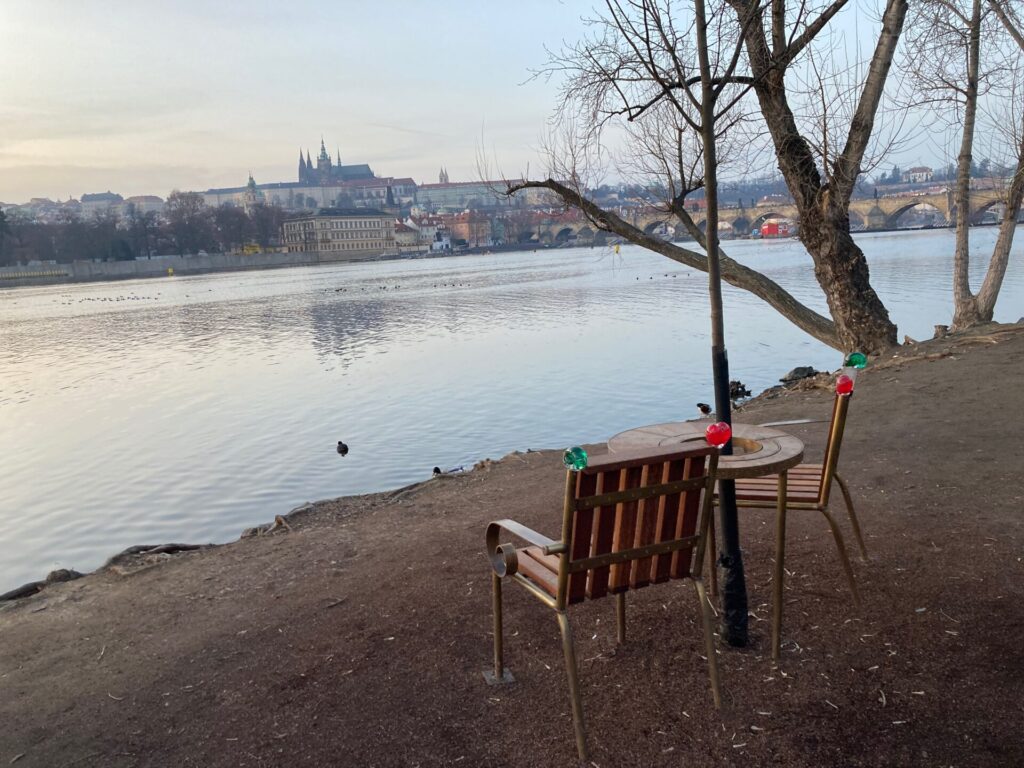
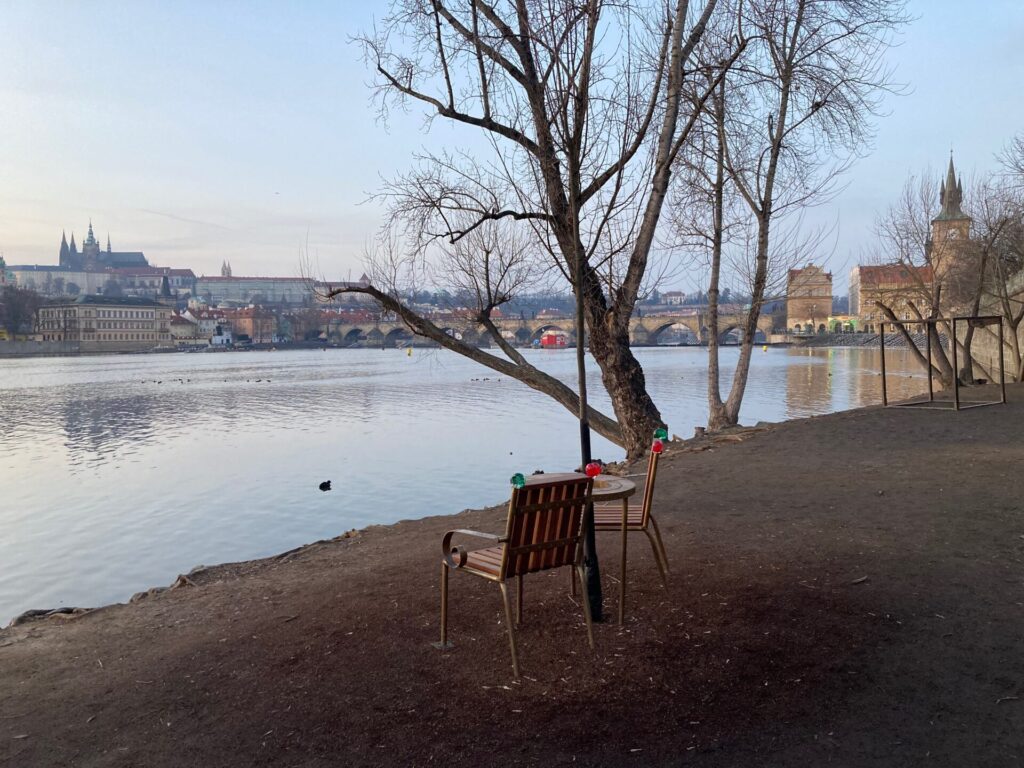
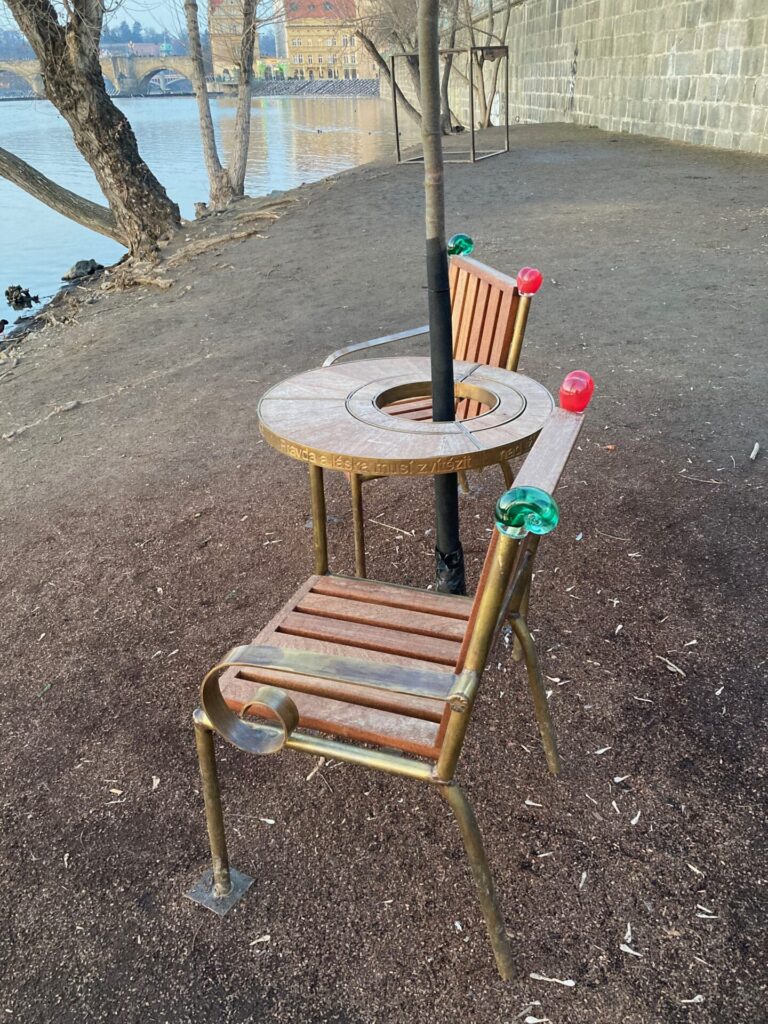
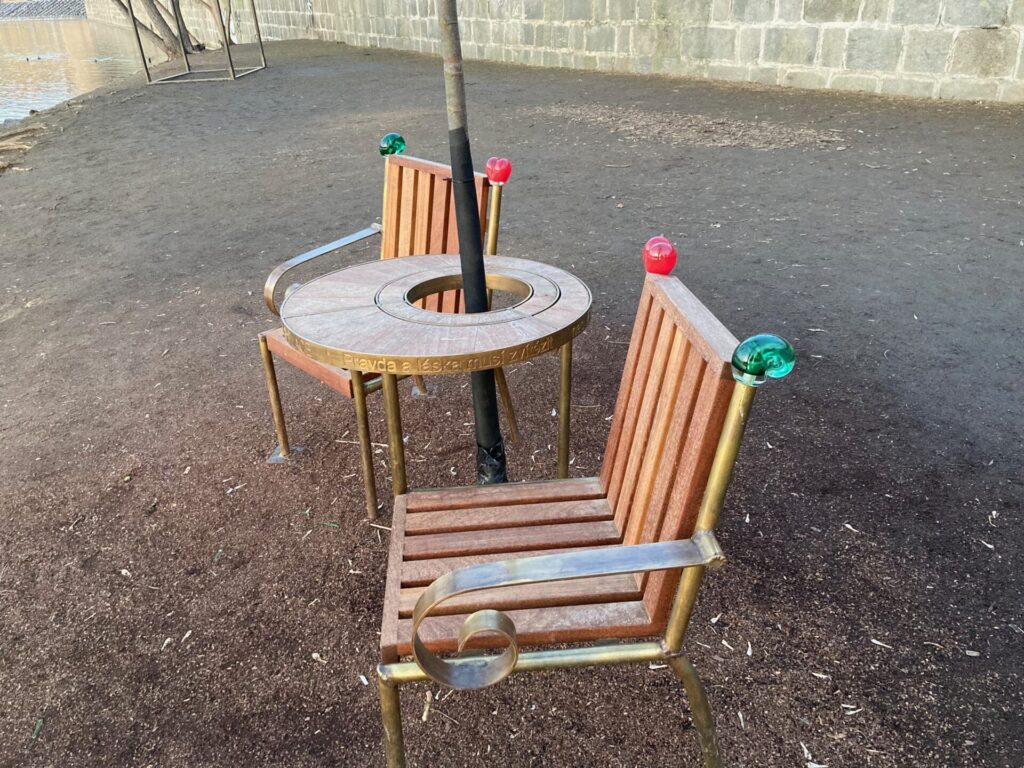
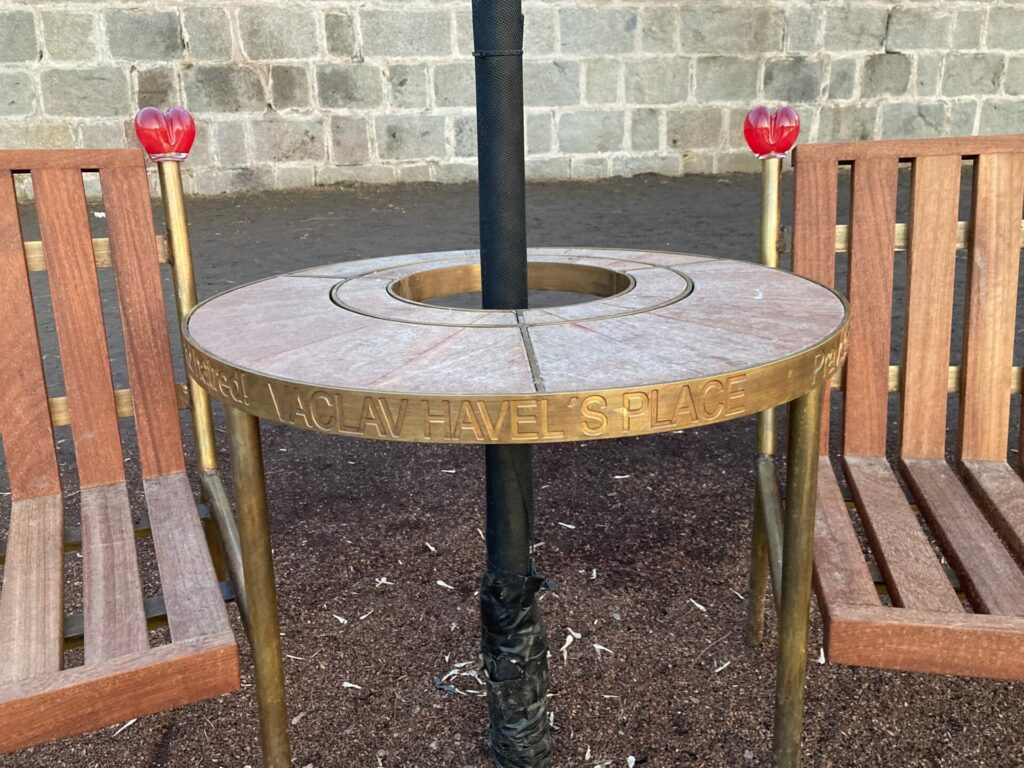
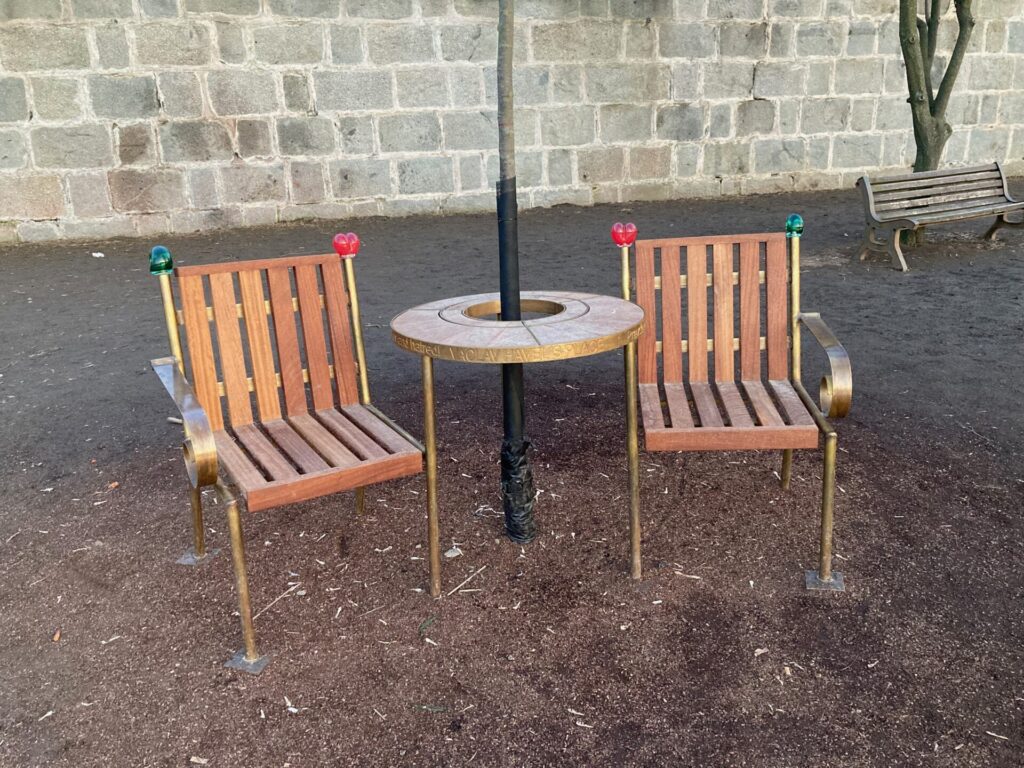
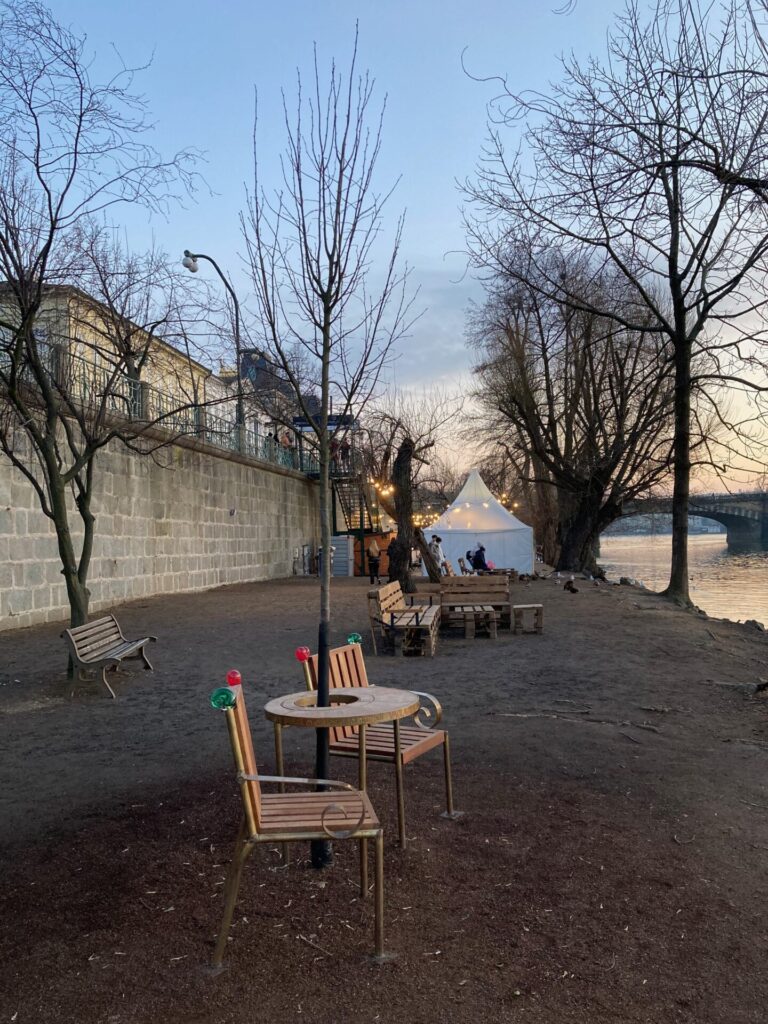
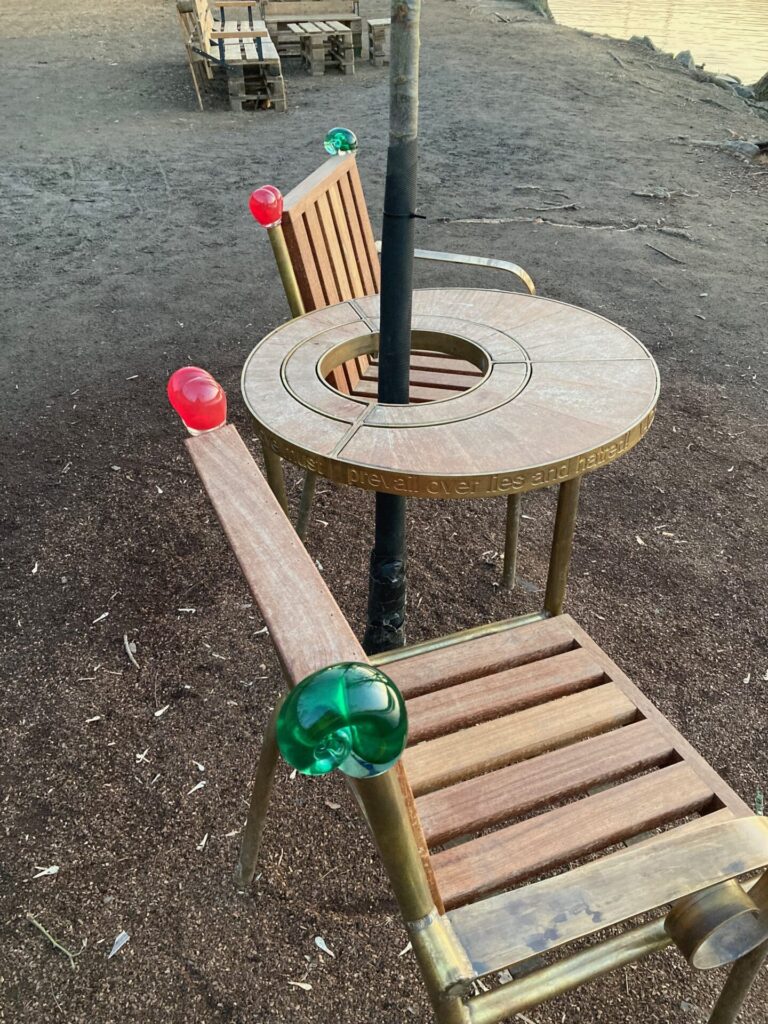
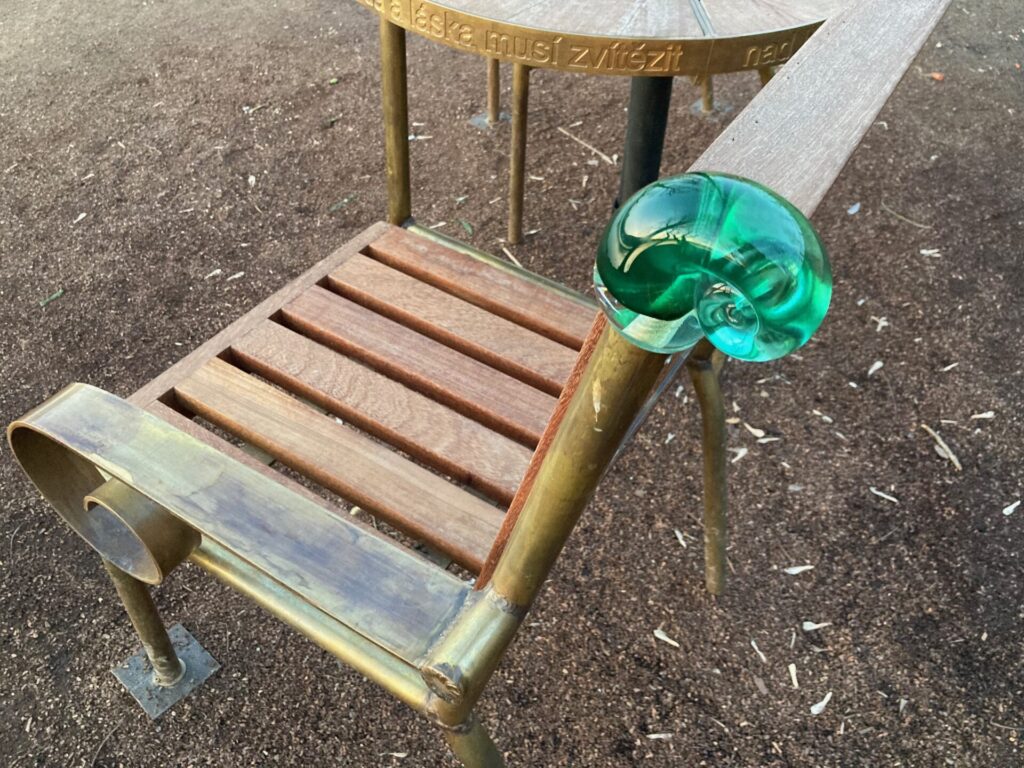
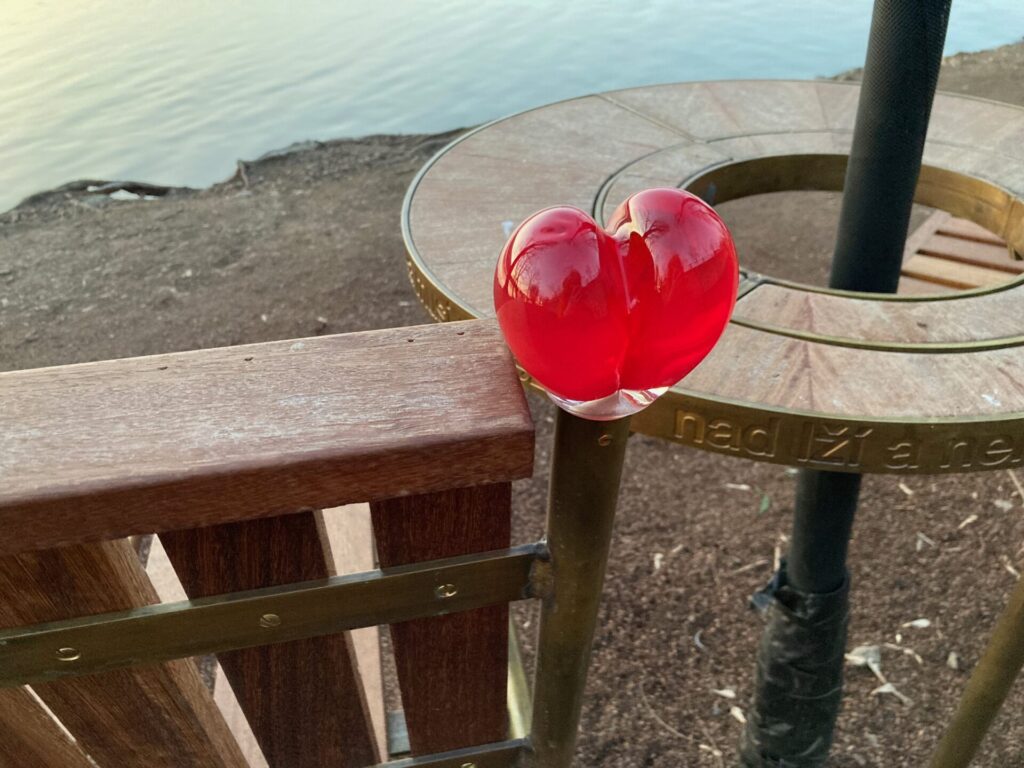
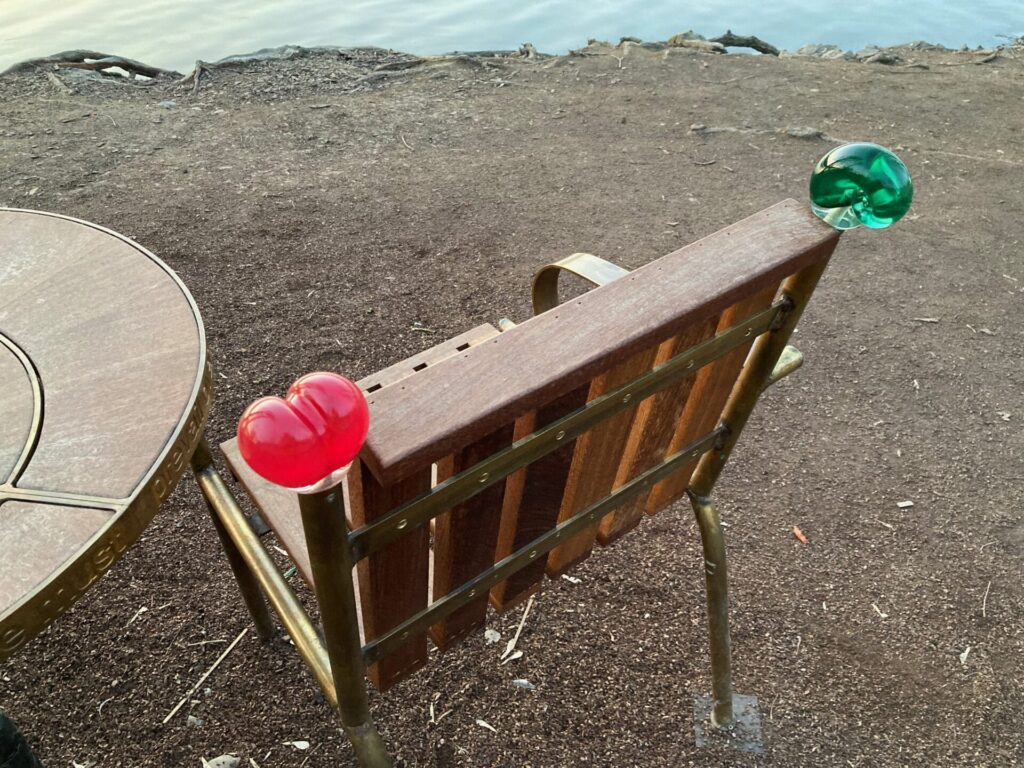
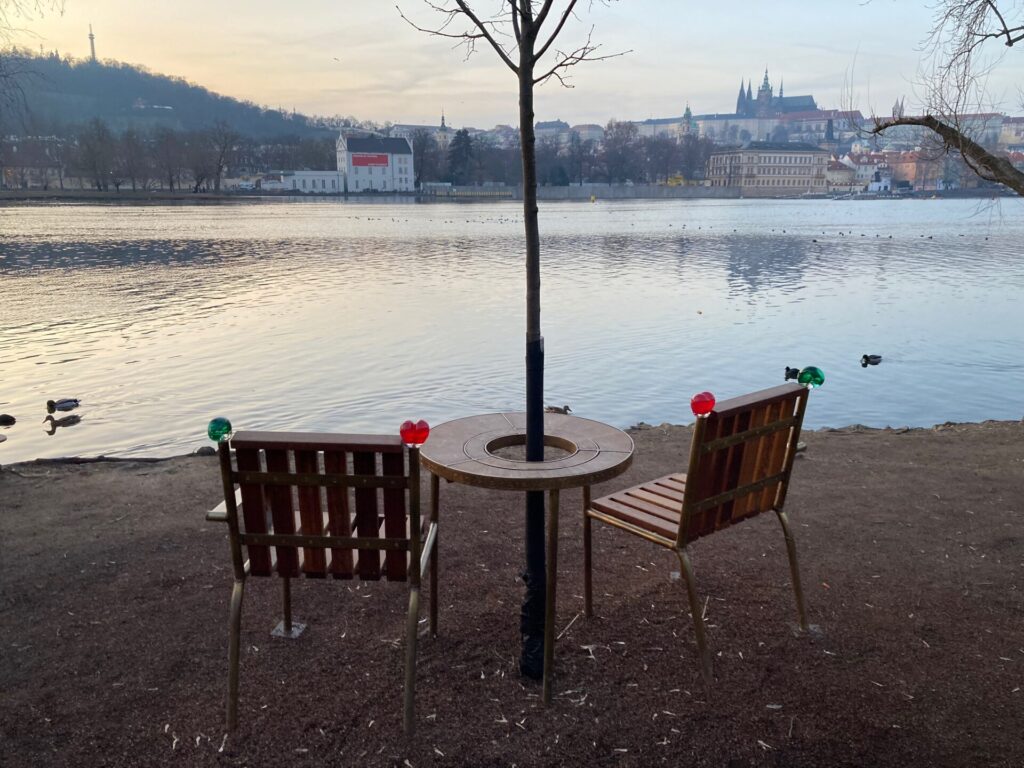
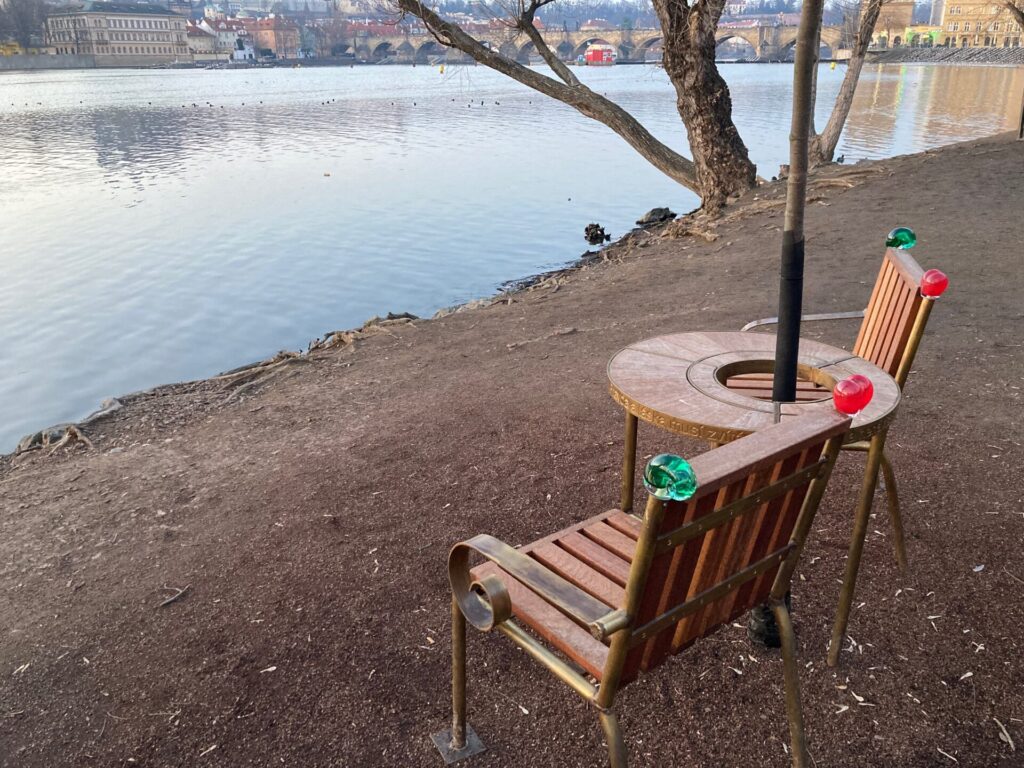
So far, the last Prague bench, the fourth in the order, has been near Čapadlo since last November 17 (the anniversary of the Velvet Revolution).
It offers a beautiful view of Charles Bridge and Prague Castle, but the location was chosen because Havel’s favorite café, Slavia is up on the embankment.
The priest and philosopher Tomáš Halík, a close friend of Václav Havel, characterized the project by saying: “The bench with two chairs symbolizes the willingness to sit down at the same table and talk together. And I think this is also an essential legacy of Václav Havel: even though we are people of different opinions, different political beliefs, and different religious beliefs, it is still terribly important that we sit down at one table and talk together and seek the truth together.”


